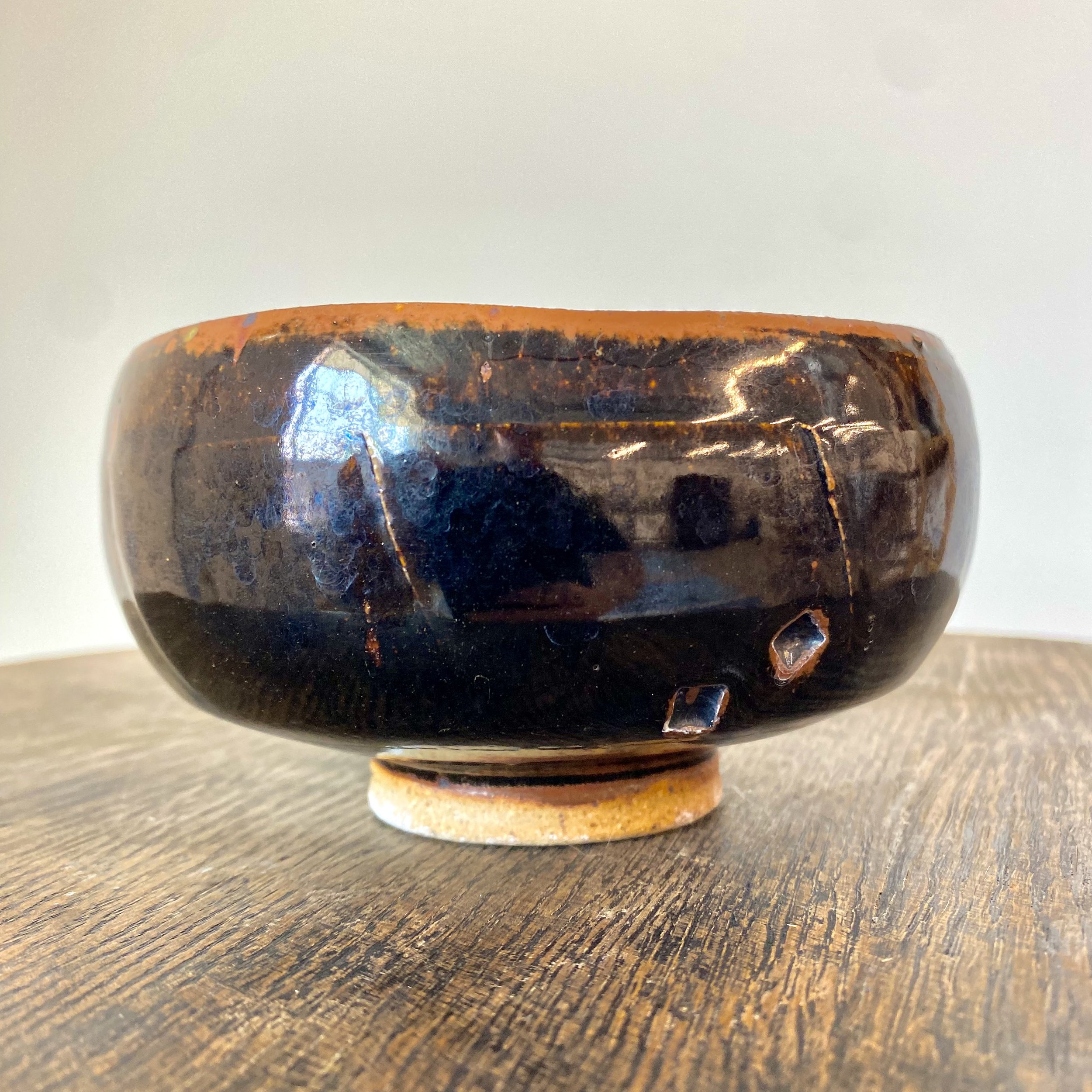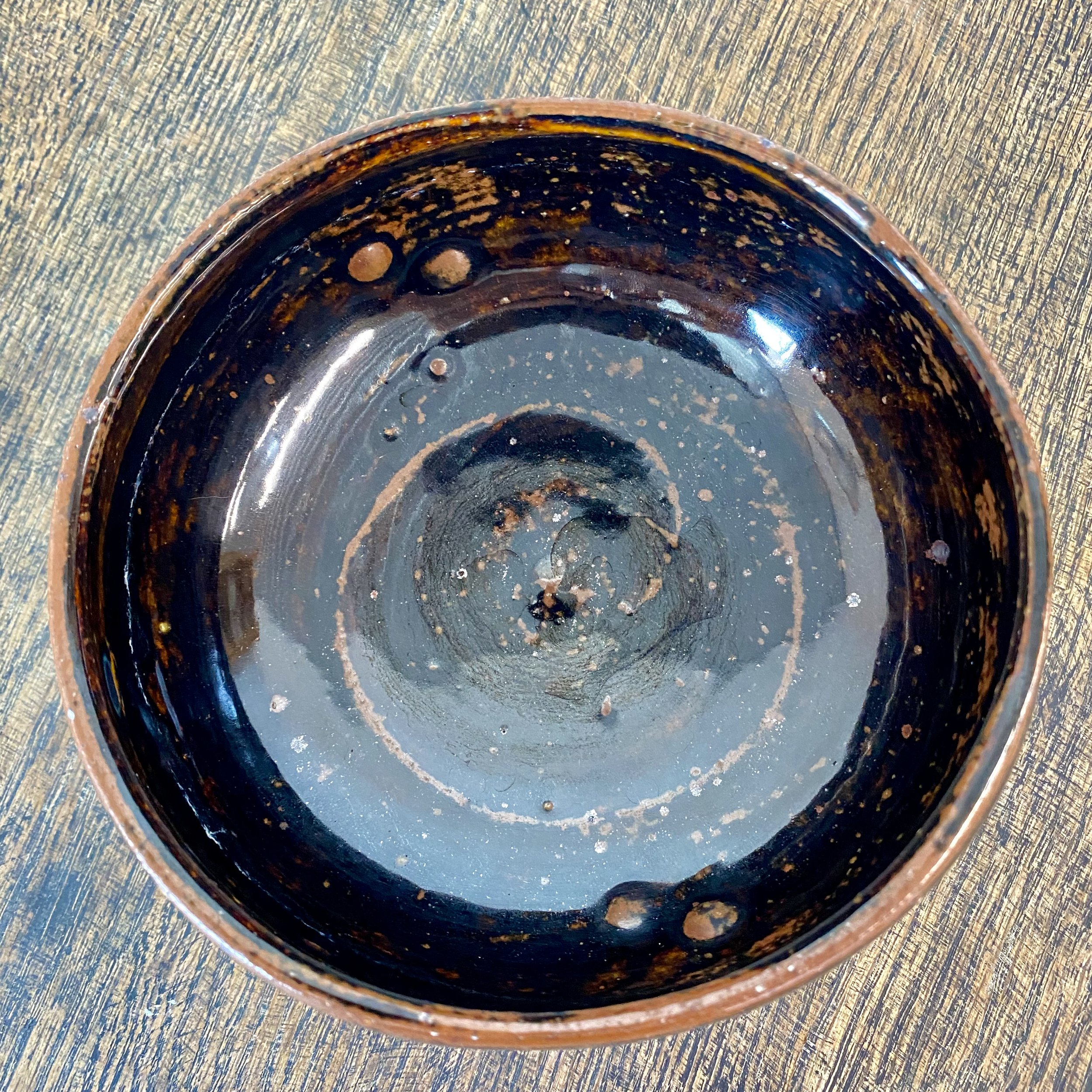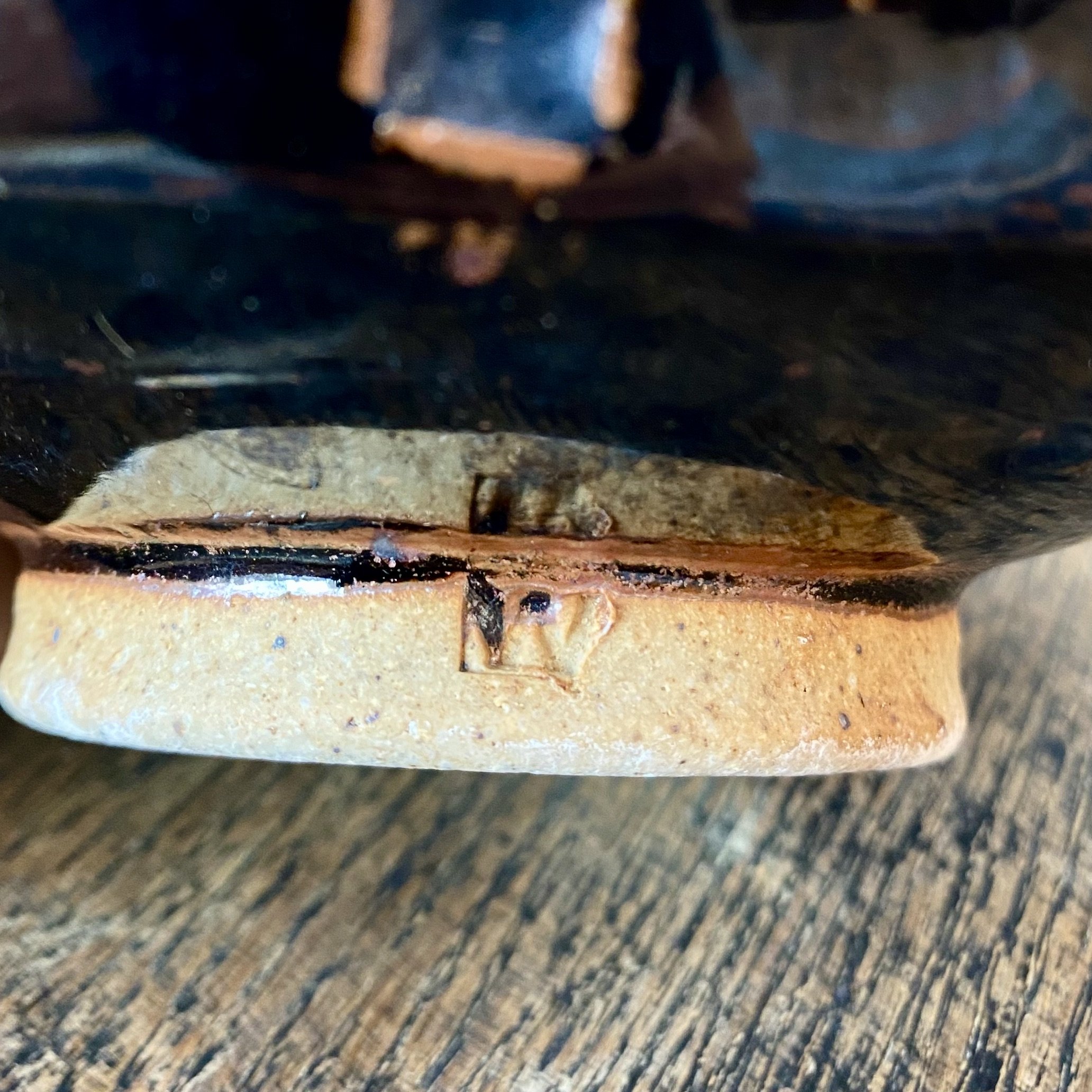 Image 1 of 3
Image 1 of 3

 Image 2 of 3
Image 2 of 3

 Image 3 of 3
Image 3 of 3




Goki Chawan
There are two basic kinds of Japanese tea-serving cups, the yunomi (湯呑み) and the chawan (茶碗). Yunomi are made for every-day use, and have a simple, cylindrical form, usually a bit taller than wide. The chawan (literally "tea bowl"), is wider and more voluminous than the yunomi, and is designed for ceremonial use. A bamboo whisk (chasen) is used to gently mix green tea powder (matcha) into hot water in the chawan, which is then passed between the guests (that’s the short version). Though the tea bowl probably originated in China, it found its expressive potential in Japan. For example, as the wabi style came to dominate the tea ceremony during the Muromachi period (1336–1573), Korean rice-bowls (Ido chawan) became all the rage, admired for their rustic simplicity. Today, there are literally dozens of styles of chawan, from peach-shape (momo-gata) to the oblong horse bucket (badarai).
This American-made chawan takes the Goki (呉記型) form, with a rounded body that is particularly lovely to hold in two hands. It was subtly carved on the wheel, and geometric indentations were pressed into the clay. The foot bears a mark (“W”), which we have not identified. 5.25 inches wide by 3 inches tall.
There are two basic kinds of Japanese tea-serving cups, the yunomi (湯呑み) and the chawan (茶碗). Yunomi are made for every-day use, and have a simple, cylindrical form, usually a bit taller than wide. The chawan (literally "tea bowl"), is wider and more voluminous than the yunomi, and is designed for ceremonial use. A bamboo whisk (chasen) is used to gently mix green tea powder (matcha) into hot water in the chawan, which is then passed between the guests (that’s the short version). Though the tea bowl probably originated in China, it found its expressive potential in Japan. For example, as the wabi style came to dominate the tea ceremony during the Muromachi period (1336–1573), Korean rice-bowls (Ido chawan) became all the rage, admired for their rustic simplicity. Today, there are literally dozens of styles of chawan, from peach-shape (momo-gata) to the oblong horse bucket (badarai).
This American-made chawan takes the Goki (呉記型) form, with a rounded body that is particularly lovely to hold in two hands. It was subtly carved on the wheel, and geometric indentations were pressed into the clay. The foot bears a mark (“W”), which we have not identified. 5.25 inches wide by 3 inches tall.